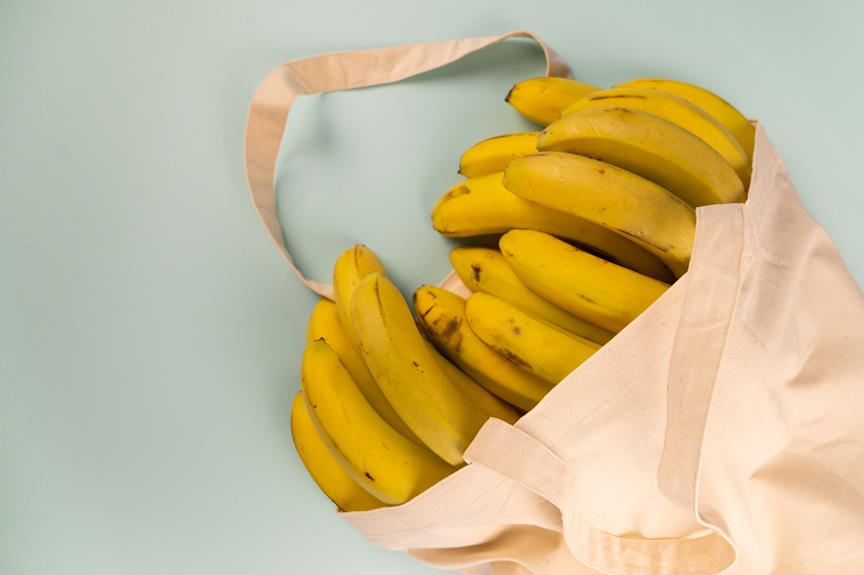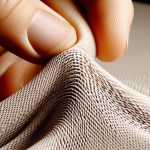Are you ready to explore the potential of banana viscose as the next must-have fabric?
Imagine a material made from the fibers of banana plant stems, offering a sustainable and eco-friendly alternative to traditional textiles. This innovative fabric has been gaining attention for its biodegradability, moisture-wicking properties, and soft, silky texture.
As you delve into the world of fashion and sustainability, the allure of banana viscose becomes apparent, with its versatility in creating a range of garment styles and its minimal environmental impact.
Join us as we delve into the possibilities and implications of banana viscose, and discover why it may just be the fabric of the future.
Key Takeaways
- Banana viscose is a durable and biodegradable alternative to conventional cotton and synthetic fibers.
- Banana viscose reduces waste by utilizing banana plant stems that are typically discarded.
- Banana viscose offers a wide range of possibilities in fashion, suitable for different styles and preferences.
- Banana viscose contributes to sustainable fashion by minimizing environmental impact and reducing the water footprint of fabric production.
The Origins of Banana Viscose
The origins of banana viscose date back to the early 20th century when scientists discovered a method to extract fibers from banana plant stems. This marked a significant breakthrough in textile innovation as it opened up a new avenue for sustainable and eco-friendly fabric production.
Banana fiber production involves the extraction of fibers from the pseudostems of banana plants, which are usually discarded after the fruit is harvested. The fibers are then spun into yarn and woven into fabric, creating a material that isn't only durable but also biodegradable. This process not only reduces waste but also provides an alternative to conventional cotton and synthetic fibers, which often have a significant environmental impact.
The use of banana viscose represents a harmonious fusion of tradition and innovation, as it harnesses age-old practices of utilizing natural resources while incorporating modern techniques to meet the demands of the contemporary textile industry.
As the fashion and textile sectors continue to prioritize sustainability, the emergence of banana viscose offers a promising solution for those seeking ethically produced and environmentally conscious fabrics.
The Sustainability Factor
With the emergence of banana viscose, you can embrace sustainable fashion while reducing waste and minimizing environmental impact. The sustainability benefits of banana viscose stem from its production process, which utilizes banana plant stems that are typically discarded as waste.
Here's a closer look at how this fabric is contributing to sustainability:
- Waste Reduction: The use of banana plant stems, which are a byproduct of banana cultivation, reduces agricultural waste and provides an alternative to traditional fabric materials.
- Renewable Resource: Banana plants are fast-growing and prolific, making them a readily available and renewable source for fabric production.
- Minimal Chemical Usage: The production process of banana viscose requires fewer chemicals compared to other types of viscose, reducing the environmental impact of fabric manufacturing.
- Biodegradability: Banana viscose is a biodegradable material, meaning that at the end of its lifecycle, it can naturally decompose without causing harm to the environment.
The Versatility in Fashion
Embrace the versatility of banana viscose in your wardrobe and discover its potential to elevate your fashion choices. This innovative fabric offers a wide range of possibilities in the world of fashion. Its adaptability allows it to be crafted into various styles, making it a trendsetting choice for those who seek to stand out.
Whether you prefer a casual, laid-back look or a sophisticated and elegant style, banana viscose can seamlessly fit into your fashion repertoire.
The versatility of banana viscose extends beyond just the aesthetics. Its lightweight and breathable nature make it suitable for all seasons, ensuring comfort without compromising on style. The fabric drapes beautifully, allowing for fluid and flattering silhouettes that effortlessly enhance your outfit.
Whether you're aiming for a chic dress, a relaxed blouse, or a statement skirt, banana viscose can bring your fashion visions to life.
Innovation is at the heart of fashion, and banana viscose presents an exciting opportunity to explore new possibilities. Its versatility opens doors to creativity, enabling you to express your unique style with confidence.
As you navigate the ever-evolving world of fashion, consider integrating the adaptability and trendsetting potential of banana viscose into your wardrobe for a truly distinctive and versatile fashion statement.
The Environmental Impact
Consider incorporating banana viscose into your wardrobe as it offers a sustainable alternative to traditional fabrics, reducing environmental impact. Banana viscose is derived from banana plant stems, which are a natural and renewable resource. Here are a few environmental benefits and insights into its sustainable production:
- Reduced Water Usage: Banana plants require significantly less water compared to other crops used in fabric production, thus reducing the overall water footprint of the fabric.
- Minimal Chemical Inputs: The production of banana viscose involves fewer chemicals and pesticides, contributing to a reduction in environmental pollution and promoting healthier ecosystems.
- Biodegradability: Unlike synthetic fabrics, banana viscose is biodegradable, meaning it can naturally decompose at the end of its life cycle, reducing environmental waste.
- Resource Efficiency: The process of extracting fibers from banana plant stems utilizes a high proportion of the plant, minimizing waste and maximizing resource efficiency.
These environmental benefits, coupled with sustainable production methods, make banana viscose an attractive choice for environmentally conscious consumers seeking to reduce their fashion footprint.
The Future of Banana Viscose
As a consumer, you can anticipate witnessing an increase in the availability and variety of banana viscose clothing and textile products in the near future. Textile innovation has paved the way for banana viscose to gain traction in the fashion industry due to its sustainable and eco-friendly nature. The market potential for this fabric is significant, with consumers increasingly seeking environmentally conscious alternatives. As a result, there's a growing demand for clothing and textiles made from banana viscose, encouraging manufacturers to expand their production lines to meet this consumer demand.
However, the future of banana viscose isn't without its challenges. While consumer demand is driving the need for increased production, there are still production challenges that need to be addressed. These challenges include scaling up production to meet the rising demand while ensuring that the manufacturing process remains sustainable and environmentally friendly. Overcoming these production challenges will be crucial in ensuring that banana viscose remains a viable and desirable fabric choice for the future.
Despite these challenges, the future looks promising for banana viscose as an innovative and sustainable textile option.
Frequently Asked Questions
Can Banana Viscose Be Used in Home Textiles and Upholstery?
Yes, banana viscose can be used in home textiles and upholstery. It offers a sustainable and versatile option for home decor uses. Its natural properties make it a desirable choice for environmentally conscious consumers.
What Are the Potential Challenges or Limitations of Using Banana Viscose in Fashion and Textiles?
Using banana viscose in fashion and textiles presents sustainability challenges, as it requires a significant amount of water and energy for production. Limitations may arise due to its potential to trigger allergies in some individuals, impacting its widespread use.
Are There Any Potential Health Concerns or Allergies Associated With Wearing or Using Banana Viscose Products?
Potential allergies and health concerns related to wearing or using banana viscose products are minimal. The fabric is hypoallergenic and generally safe for those with sensitive skin or allergies, making it a versatile and comfortable choice.
How Does the Production Process of Banana Viscose Compare to Other Sustainable Fabric Alternatives Such as Bamboo or Hemp?
When comparing the production process of banana viscose to other sustainable fabric alternatives like bamboo or hemp, it's important to consider factors such as sustainability, challenges, and limitations. Research into health concerns and developments in other industries also play a crucial role.
Are There Any Ongoing Research or Developments in the Production and Application of Banana Viscose in Other Industries Outside of Fashion and Textiles?
Are there ongoing research or developments in banana viscose applications for non-textile industries? Research is expanding to explore industrial uses such as in paper, medical, and food industries, showing promise beyond fashion and textiles.
- How to Soften Percale Sheets: 5 Methods That Actually Work - July 14, 2025
- Is Cotton Percale Soft? Comparing It to Other Weaves - July 14, 2025
- A&I Cotton Percale Sheet Set (King): A Product Review - July 14, 2025







